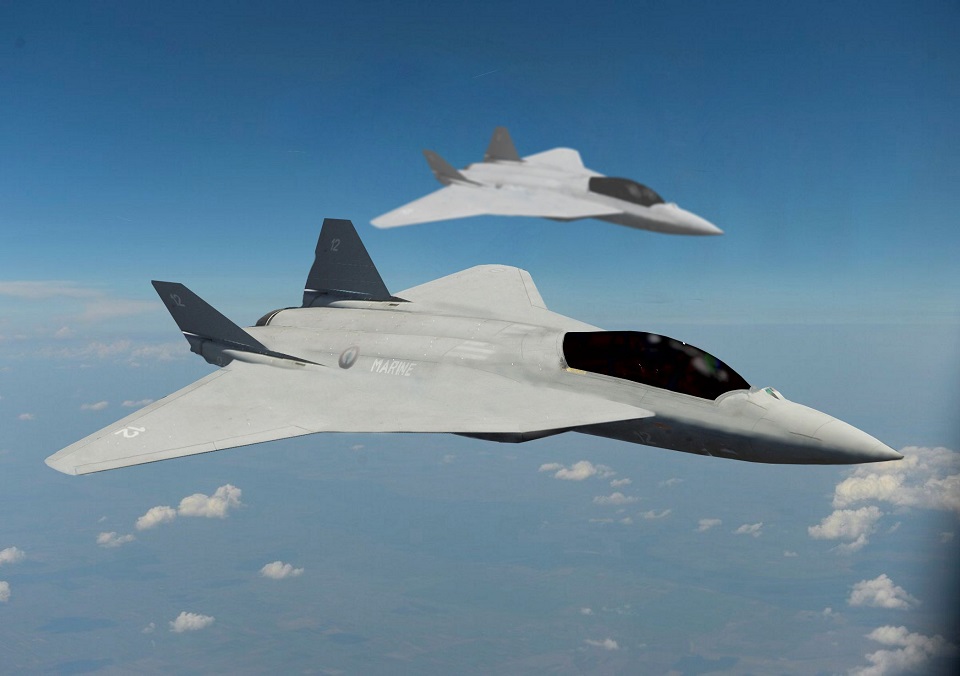Aviation
Russia to develop sixth-generation fighter aircraft by 2050

In the quest for military supremacy, the competition to develop next-generation fighter jets has intensified. The United States, India, Japan, and other technologically advanced nations are actively involved in the development of sixth-generation combat aircraft.
Meanwhile, Russia has targeted the creation of a formidable sixth-generation fighter jet by 2050, demonstrating its dedication to preserving its position as a key player in military aviation. As the global aerial warfare landscape evolves, nations are racing to secure dominance in the skies through cutting-edge technological advancements.
According to the reports, Russia is strongly working to set the foundation for this enormous project. This information, which revealed the country’s strategic goal for future aerial superiority, came from the Scientific Director of the State Research Institute of Aviation Systems.
A cooperative endeavor involving in-depth study and discussions with military professionals is essential to realizing this goal. The sixth-generation fighter jet is intended to be designed with the needs of armed conflicts in consideration. However, challenges loom on the horizon, with complexities inherent in designing next-generation aircraft posing significant hurdles.
The development process extensively involves consulting and collaborating with military experts to foresee the requirements of forthcoming armed conflicts. Presently, we are exploring the idea of a sixth-generation aircraft, engaging in research and discussions with military specialists,” he stated. However, Fedosov emphasized a significant worry regarding the intricate design of next-generation combat aircraft, labeling it as a possibly detrimental practice.”
with each advancement in military aviation, there is a tendency for the size and weight to escalate, inevitably affecting the cost of such equipment. Additionally, he highlighted that the sixth-generation combat aviation group will encompass both manned aircraft and unmanned vehicles. And stressed that combat aircraft are progressively becoming more intricate, consequently adding to their weight and cost.
Russia may currently be in the initial stages of conceptualizing its response to this race. They are actively engaged in discussions to shape their strategy. Although there may not yet be a concrete concept or approved project proposal, the commitment and confidence of Russian developers remain strong. With their expertise and dedication, there is the belief that Russia will successfully realize its vision for an advanced aircraft by 2050.

Airlines
Air India to Launch aircraft maintenance training institute in Bengaluru

Air India, one of India’s leading global airlines, is set to establish a Basic Maintenance Training Organization (BMTO) in Bengaluru.
This institute will offer a comprehensive Aircraft Maintenance Engineering (AME) program certified by the Directorate General of Civil Aviation (DGCA). The program will follow an integrated 2+2 year structure, combining classroom learning with practical, hands-on training.
This initiative is part of Air India’s broader goal of creating a robust aviation ecosystem in India. With plans to expand its fleet and strengthen its operations, the airline aims to build a skilled workforce of maintenance engineers, making the organization self-reliant while supporting its ambitious transformation journey.
This country tops visa rejections in the popular Schengen countries
To bring this vision to life, air india has partnered with Bengaluru Airport City Limited (BACL), a subsidiary of Bangalore International Airport Limited (BIAL). Together, they will develop a state-of-the-art facility spanning 86,000 square feet at Bengaluru Airport City.
This purpose-built campus will feature modern classrooms, well-equipped laboratories, and qualified trainers to deliver world-class education and training. The institute is expected to become operational by mid-2026.
The BMTO will be located close to Air India’s new 12-bay Maintenance, Repair, and Overhaul (MRO) facility, also set to open in Bengaluru by early 2026. The AME program will begin with two years of academic coursework, followed by two years of practical training at the MRO, ensuring students receive hands-on experience adhering to industry standards.
Sanctions & Engine Issues Ground Half of Russia’s A320neo fleet
In the meantime, Air India has introduced a Cadet AME program in collaboration with reputable institutions in Bengaluru and Hyderabad.
This ensures continuity in its commitment to developing skilled aircraft maintenance engineers while the BMTO facility is under construction. The program also allows students to pursue a bachelor’s degree through university partnerships, enhancing their career and academic opportunities.
With this initiative, air india plane aims to address the growing demand for skilled professionals in aircraft maintenance and engineering, air india new planes contributing to the development of India’s aviation sector and creating specialized career paths for aspiring engineers.
-

 Aviation2 months ago
Aviation2 months agoMicrosoft Flight Simulator Raises $3 Million to Bring Back the An-225 Mriya
-

 Airlines2 months ago
Airlines2 months agoQatar Citizens Can Travel to the United States Without a Visa
-

 Aviation2 months ago
Aviation2 months agoQatar Airways bans these new Electronic Devices on plane
-

 Airlines2 months ago
Airlines2 months agoJapan Airlines Rolls Out Free Domestic Flights to International Passengers
-

 Defence2 months ago
Defence2 months agoWhich Country Has the Largest Fleet of Fighter Aircraft?
-

 Airport2 months ago
Airport2 months agoWestern Sydney Airport Welcomes Its First Plane After 6 Years of construction
-

 Travel2 months ago
Travel2 months agoQatar Airways Launches Four Additional Flights from Amsterdam
-

 Aviation2 months ago
Aviation2 months agoDid you know ? Once Boeing 747 carried 1088 passenger in 1991








